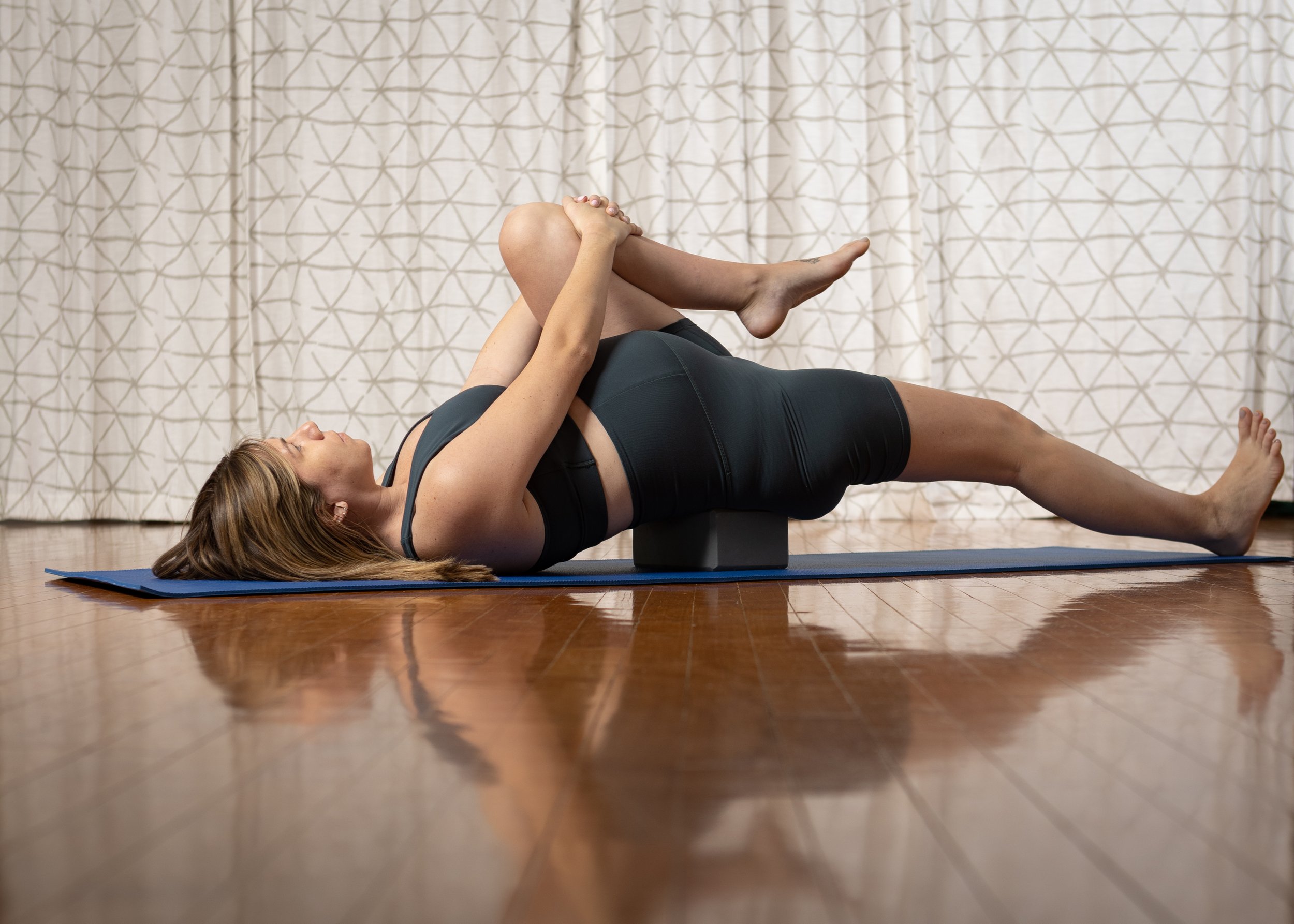The psoas is the deepest hip flexor in the body, and has a dramatic impact on both the spinal positioning, as well as how the baby positions during pregnancy. Draping over the pelvic right and left, the two muscles almost serve as a guidewire for the baby to rotate and enter the pelvis.
When working with your psoas it’s important to take it low and slow, and to keep breathing. The psoas starts on the front of the twelfth thoracic vertebrae- which is also where the tendon for the abdominal diaphragm connects. Because of this intrinsic connection to the breathing the psoas is often tied in with our autonomic nervous system, and can be holding a great deal of tension even without us realizing it. So going gently and reducing stress is key in creating a pliable psoas muscle- in pregnancy and in life.
The psoas draping across the pelvic inlet
From T12, the psoas continues attaching to the front of each of the lumbar vertebrae down to the pelvis, where it interfaces with a muscle attaching to the inside of the Iliac bone (the wide wing bones on the side of the pelvis). These two muscles together then extend over the inlet of the pelvis and attach to the lesser trochanter on the inner thigh. The combined muscle is commonly referred to as the iliopsoas. The position of crossing the pelvis is where this muscle has such a dramatic impact on the birth pathway.
The uterus nestles between the two bands of the iliospsoas with each muscle forming a sort of flexible wall across the top of the pelvis. when pliable and yielding, these walls for a sort of funnel which guides the baby’s head through the lower segment of the uterus and into the pelvic inlet. But when rigid or stiff (I’m looking at the runners and cyclists here…) this same group can not only narrow the space available at the top of the pelvis, but can actually close the inlet front to back as well because of how the muscles pull on the sacrum (the bone at the back of the pelvis). Additionally, for some, the rigidity in the psoas can wind up holding the baby in a head up position, leaning against the firm muscle wall rather than spinning via gravity into the head down position for birth.
Symptoms of a tight psoas can range from lower back pain, to shortness of breath, to postural changes, to nothing at all. Because the psoas is so deep within the body it is possible for this muscle to hold tension and the body to compensate around it without major side effects- at least not until we load the system as we do with the weight shifts and physical requirements of pregnancy.
Gently stretching the psoas on a daily basis can not only free up space for the baby, but can also allow for better lower back function, deeper breathing, and better responsiveness in the pelvic floor as well.
Stretching the Psoas
Begin with a yoga block or rolled blanket. Come to your side, and roll onto your back. Lift your hips and place the block or blanket roll under your hips. Then draw one knee towards your chest (leaving room for baby of course) and extend the other leg along the floor.
Control the stretch from how strongly you pull on the lifted knee. Drawing the knee in further will rock the pelvis back- opening the hip flexors further.
This stretch pulls asymmetrically on the pelvis and as such can be risky for loose pubic joints. If you are feeling pain in the front of the pelvis, consider practicing this only briefly.
To come out, gently draw the extended leg into the chest and replace the feet to the floor. Practice both sides, then roll to your side to come out.
(Note: if you are experiencing pain around the pubic bone be gentle on how much you pull the lifted knee into the chest, and place both feet on the floor, squeezing the knees together for a moment to reset the pubic joint before going to the other side)
Freeing the Psoas- Leg swing
An additional method for releasing the psoas is to stand with one foot on a stair and the other foot dangling off the edge- make sure to hold onto a wall or the banister.
On an inhale draw the free leg back until you feel the glute muscle engaging while maintaining an upright spine. Imagine your leg is like a spring being gently wound up.
On the exhale, release the “spring” allowing the leg to swing gently forward and back. Think of the leg swinging not from the hip, but from the base of the ribcage. There is very little muscle action to create this.
Allow the leg to swing casually for about 30 seconds. Then let the movement subside and step both feet to the same level. Notice the difference. Then do the other side.
The essential mama poses at your fingertips
Click the link below for a free downloadable ebook version of my Essential Mama Poses so you can take my most recommended poses right to the mat.





